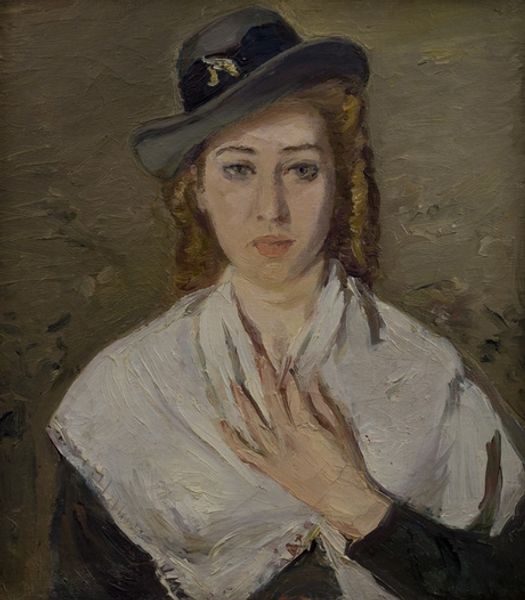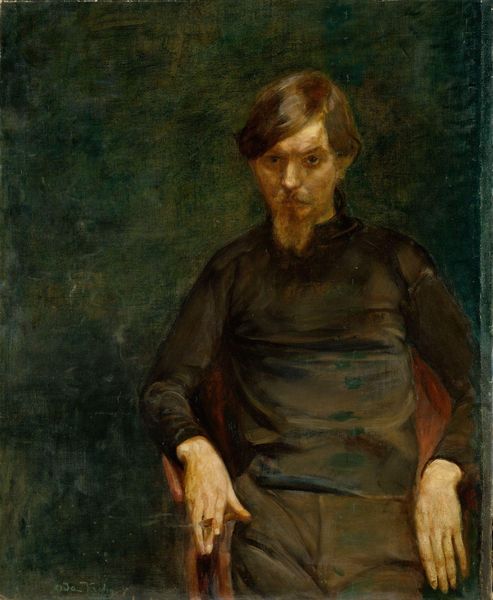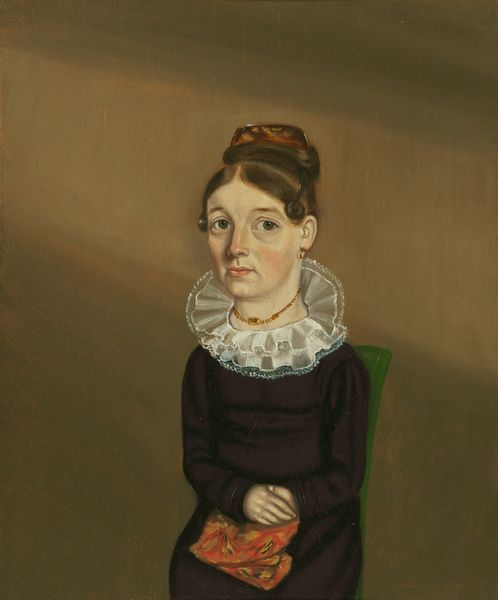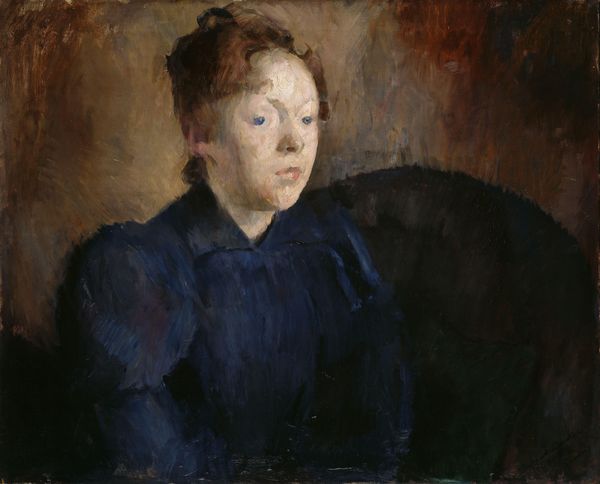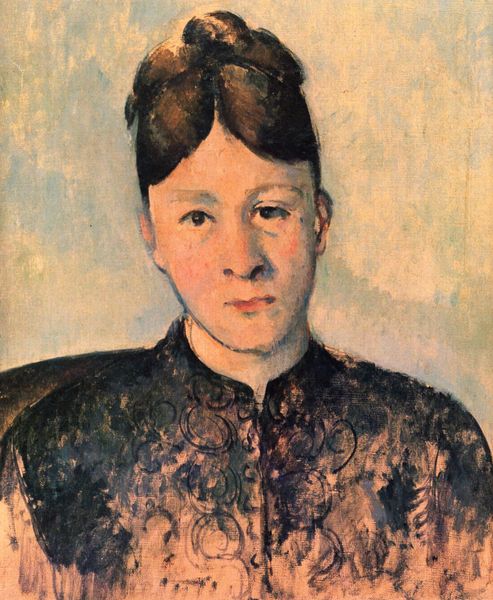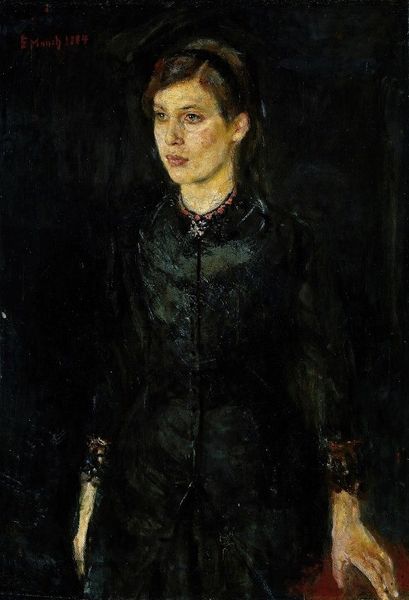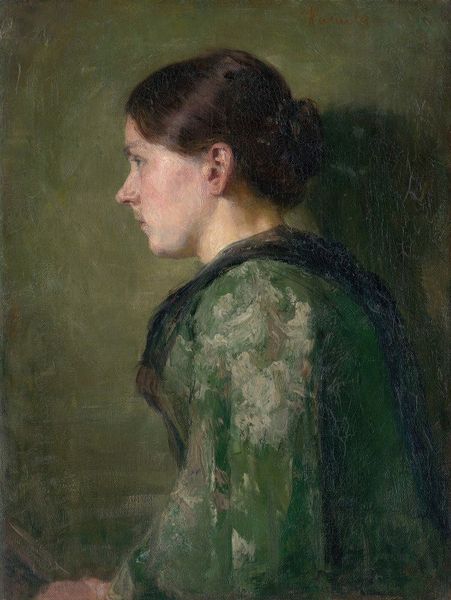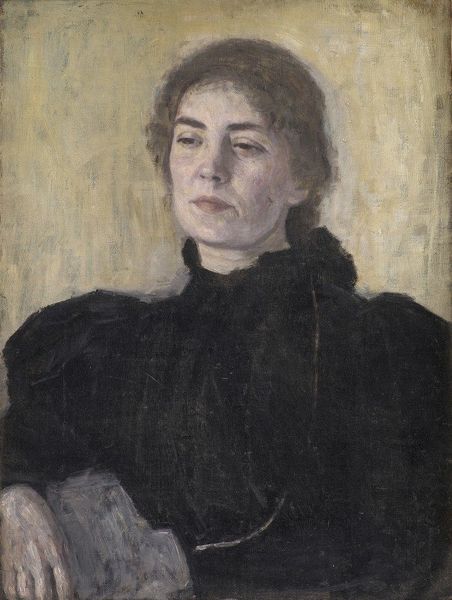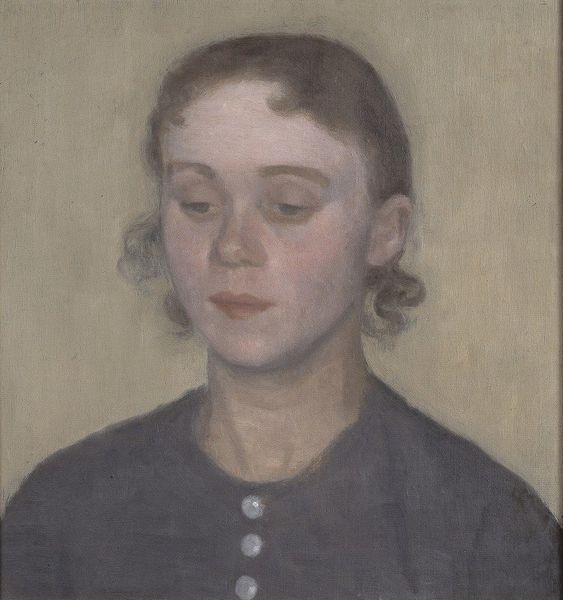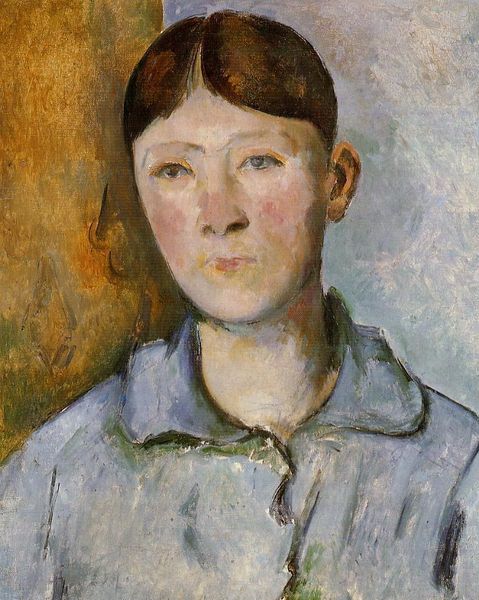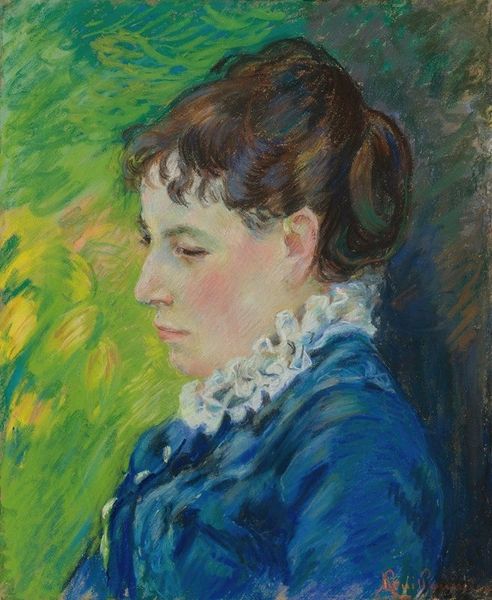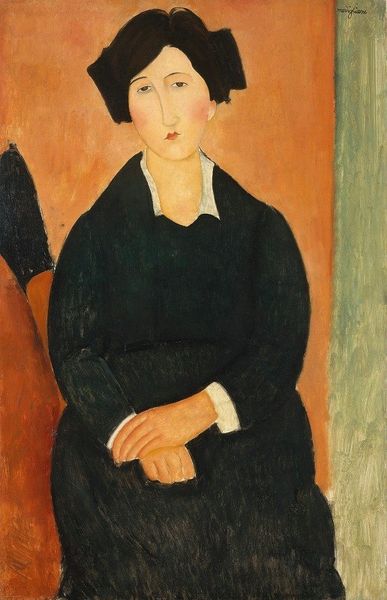
painting, oil-paint, impasto
#
portrait
#
figurative
#
self-portrait
#
painting
#
oil-paint
#
oil painting
#
impasto
#
post-impressionism
Copyright: Public Domain: Artvee
Curator: Paul Cézanne, of course best known for his still-life paintings and landscapes, also produced several portraits of his wife, Hortense Fiquet. This painting is titled "Portrait of Madame Cézanne," executed in oil on canvas. What is your first reaction? Editor: A somber stillness. It’s the downcast eyes and the subdued color palette; everything seems weighted. Is she sad? Or just contemplative? Curator: I find myself drawn to the physicality of the paint. The visible brushstrokes, especially in the background, remind you of Cézanne's deliberate application, building up form through layers of pigment. It's almost sculptural, a rejection of illusionism in favor of emphasizing the material reality of the painting. What significance might you ascribe to this approach? Editor: Well, her gaze definitely hints at some hidden significance, but look closer at her clothing – those stripes almost resemble prison bars, or perhaps even a shroud. Could these bold patterns be symbolic of a confined spirit, or perhaps some kind of internalized constraint that Cézanne is trying to convey through her portrayal? Curator: That’s fascinating, considering his tumultuous personal life. It’s also vital to understand the shift in art-making during this period. Impressionism pushed against academic art traditions. What we're seeing here, though, is a move toward abstraction – it is an exploration of form and structure over purely representational likeness, isn't it? Each layer informs the viewer that a painter meticulously placed colors on a flat surface. Editor: But aren’t we also seeing a cultural moment reflected here, perhaps the societal expectations placed on women during that era? Madame Cézanne’s posture, that almost passive presentation, tells us she had no role other than to support him, right? Even the way Cézanne has rendered her clothing – the simple, almost drab attire – further contributes to this sense of domestic confinement, like a woman constrained by social and cultural expectation. Curator: The beauty of studying art lies in uncovering just this interplay between artistic intention and societal influence, how the artist used their tools in hand, like brushstrokes and subjects in this “Portrait of Madame Cézanne," to both push boundaries and mirror back to us the world around them. Editor: It’s precisely this delicate balance, between intimate depiction and a reflection of broader social structures, that I believe truly anchors this picture. The somber reflection feels earned, through this balance, if that makes sense.
Comments
No comments
Be the first to comment and join the conversation on the ultimate creative platform.
